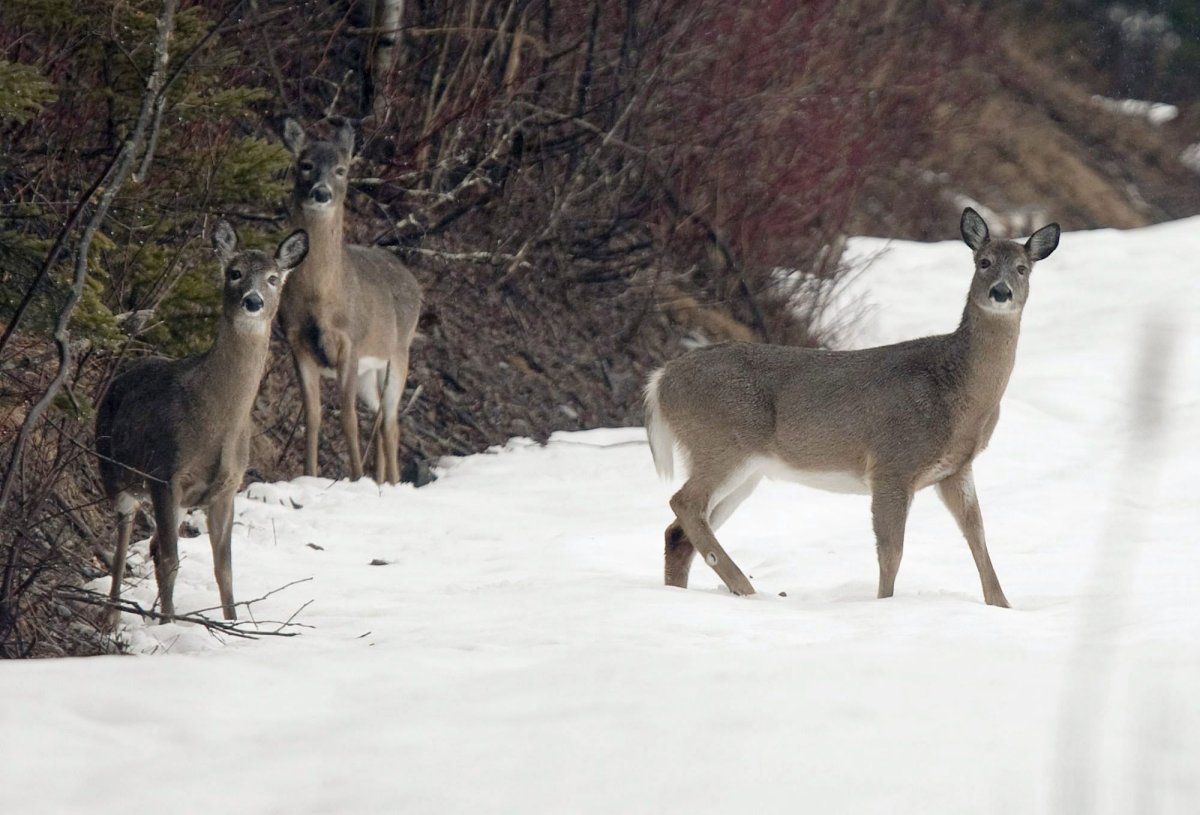EDMONTON – The Alberta Fish and Game Association says the shooting of dozens of animals by suspected poachers this fall is deplorable and points to the need for more wildlife officers.

In just one area west of Edmonton, officers are investigating the deaths of 26 deer, elk, moose and a black bear – the carcasses were left on the ground to rot.
Association president Gord Poirier said there have also been cases of drunken people out hunting and people shooting animals at night from vehicles.
“No sane person, or sober person, would do something like that,” Poirier said Monday.
“It is just a waste. And the danger — people shooting from roads is unethical.”
Poirier said the Alberta government needs to more than double the number of wildlife officers to about 250 and impose tougher penalties to end such carnage.
Brendan Cox, a spokesman for Alberta’s Justice Department, said the animals shot in the Edson area were killed over a six-week period.
“This incident in Edson is not typical of that area but it is concerning because of the number of animals involved,” he said. “Our officers are looking for tips from the public.”
Cox said Alberta has about 112 wildlife officers that investigate between 750 to 1,000 reported poaching cases each year.
The Alberta Conservation Association estimates fewer than 10 per cent of poaching cases are detected. The top five poached mammals in Alberta are deer, elk, moose, bighorn sheep and bears.
Cox said 12 more field officers are due to join the service in December, but they will be replacing people who are retiring.
To date this year the province has laid 254 hunting-related charges, compared to 464 in 2012.
The Alberta Union of Provincial Employees said in the mid 1990s when the province’s population was about 2.5 million, more than 150 wildlife officers were on duty.
There are now more than four million people living in Alberta.
Mike Dempsey, a union official who represents wildlife officers, said staff are spread way too thin.
“Hard pressed,” he said. “The public has to know that there is a lack of a presence on Crown land.”
Earlier this month RCMP charged three people west of Rimbey after pulling over a truck at night with its headlights off.
Inside the truck police found three hunting rifles and a spotlight.
Investigators said the three had been drinking and one had fired shots at a bull elk near a house in a remote area while another person shone the light at the animal.
The carcasses of two bull moose were found in the same area in 2012. The antlers had been taken but the meat was left to rot.
Earlier this month two moose were shot dead by suspected poachers on a fenced wildlife refuge west of Calgary operated by the Cochrane Ecological Institute.
The institute cares for injured and orphaned animals until they can return to the wild.
Poirier said consistent, tough sentences for people convicted of poaching are needed as a deterrent.
He noted a case near Edmonton where a convicted poacher basically received a slap on the wrist.
“Another guy shot two bull elk east of the city and got a $3,000 fine,” Poirier said.
“No lifetime hunting ban. He shot two bull elk out of season, out of area. It depends on the judge.”


Comments